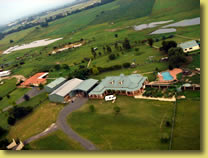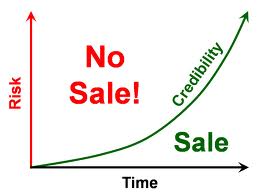 Creating the right image to build credibility in your market is important because people will form an impression from the first meeting. What you wear, your grooming, your vehicle, your place of work, your marketing materials and affiliations – the trappings of image, need to work for you and not against you. While you want to present success you do not want to do it to excess. If it is found out that certain things in your image arsenal were put in place simply to impress, you destroy your credibility.
Creating the right image to build credibility in your market is important because people will form an impression from the first meeting. What you wear, your grooming, your vehicle, your place of work, your marketing materials and affiliations – the trappings of image, need to work for you and not against you. While you want to present success you do not want to do it to excess. If it is found out that certain things in your image arsenal were put in place simply to impress, you destroy your credibility.
What is important for a positive impression and what do you want to convey about your business? In our business the majority of customers came to our home. We used to live on a five acre block in a small 55 year old red brick spec home with the workshop in detached shedding near to the house. We were on a main road directly beside traffic lights with awkward access. The sheds were functional and the grounds tidy, but we didn’t look like Australia’s largest makers and restorers of rocking horses.
While I knew I presented a winning image of our business over the telephone and on the internet, at times I could see trepidation and disappointment in the faces, particularly of the well-to-do customers, who came drop off their restorations or pick up their finished rocking horses. I put this down to the property not matching up to their image expectations which had been effectively created through other channels.
By a little real estate serendipity we were able to change our place of work to an impressive, 10 year old home with large colourbond shed on 10 acres with 300 metres of road frontage on a busy arterial with easy access. When people arrived at this new place of work the image created both over the phone and on the internet as Australia’s largest makers, restorers and teachers of rocking horses matched the reality they found.
While you may not be in a position to change your place of work as we did, you need to know it has the potential to make a world of difference to your image, credibility and may in some circumstances bring in more business and publicity.
We had more attention from ad agency photographers, prop masters, TV, magazines and press in 18 months at our new location than the five years at our previous location. I did market our previous location, but it could never have received the sustained interest that this one has.
There is another subtlety in our image that I was keen to cultivate to prospective customers and class students. While I wanted to convey a successful image, I also want to convey that our classes and rocking horses were good value for money and we were down to earth, practical, approachable and not precious about what we did. These values are important to most people but especially baby boomers considering taking a three day class and spending potentially thousands of dollars with you.
I did not produce a fancy, full colour brochure to promote our classes, tours or accessories range. I printed on demand a black and white version from my laser printer on different coloured paper stock. The showroom was tidy and functional but I didn’t obsess about the dust, as it was part of the charm that we were “a working rocking horse makers”. My work is was sometimes dirty and messy and I did not fuss about my workshop clothes – racing in to change when customers arrived. We had a well maintained white Mercedes commercial van as our only vehicle which denoted quality and practicality without being excessive.
I put “image resources” into my phone manner, website, colour postcard, the class booking pack, keeping the property & vehicle well maintained and providing high quality meals and refreshments to classes and groups.
The best way to ascertain what kind of image you should cultivate is to observe your current customers and how they dress, what standard of car they drive, what accessories they sport, what hobbies they have and what clubs or groups they are members of. Build an image that harmonises with their’s without overdoing it. Your goal is to eliminate any possible negative barriers to doing business with them.
.jpg)


